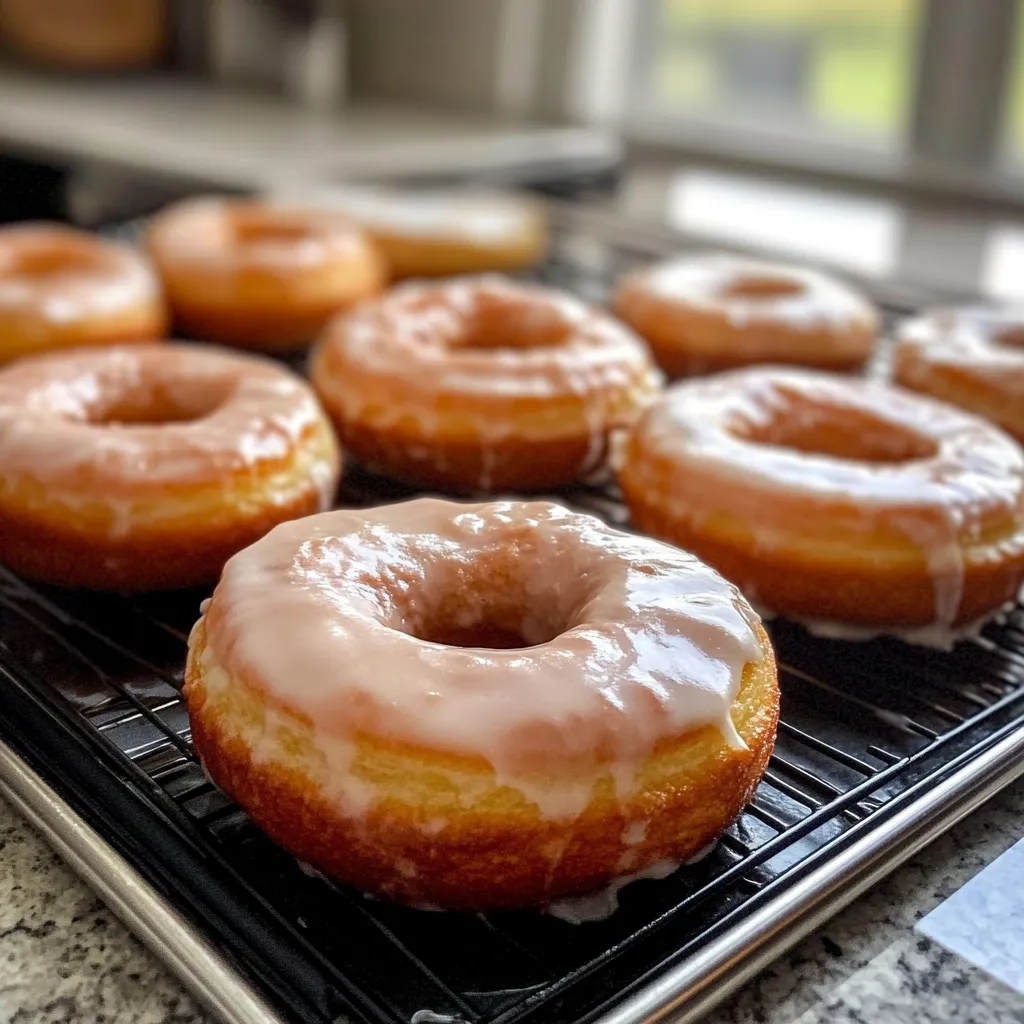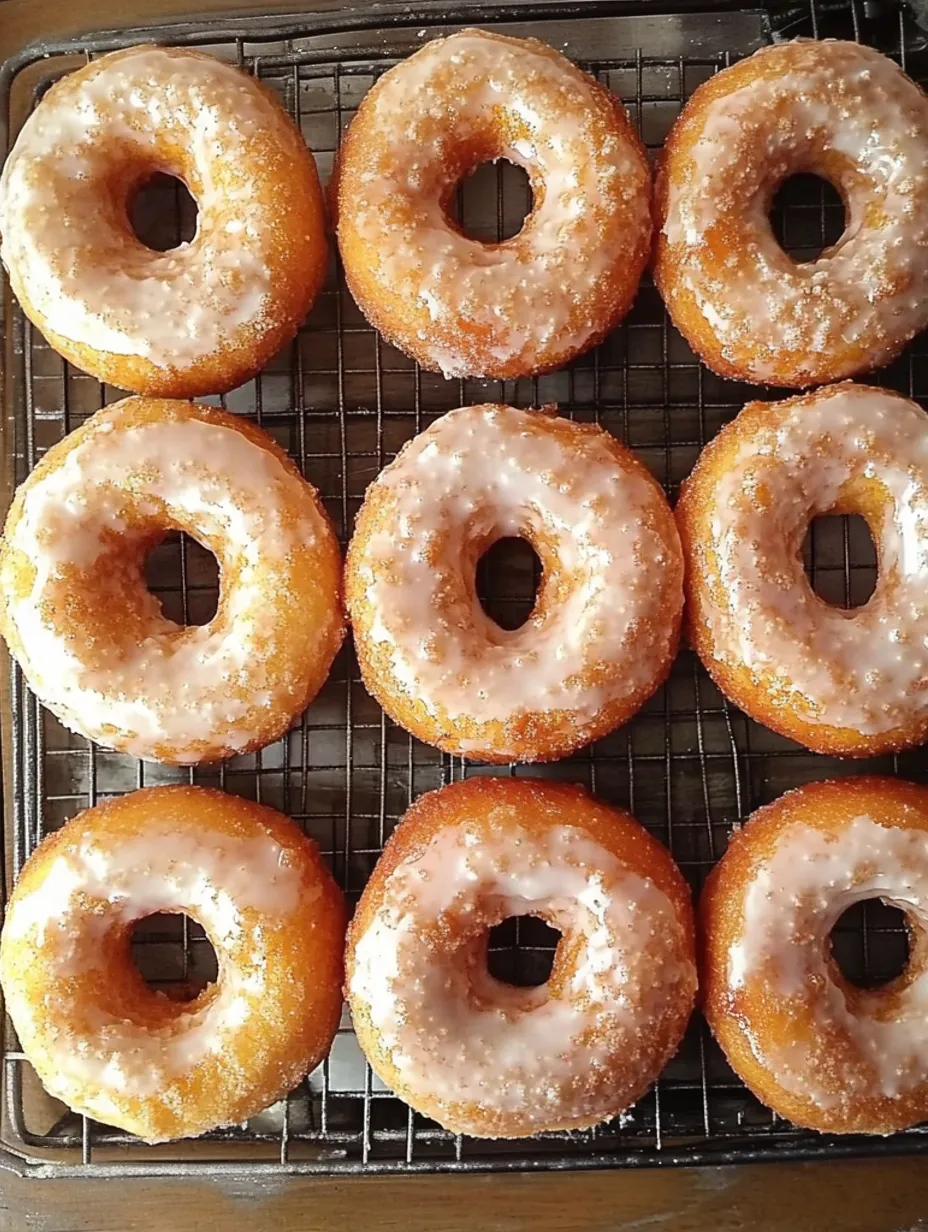 Save
Save
Classic cake donuts give you that amazing mix of crunchy outside and soft, fluffy inside that's made them a bakery staple forever. Their jagged edges and warm notes of nutmeg and cinnamon make these treats something you'll crave—perfect with your early coffee or as a sweet pick-me-up later in the day.
I found out how to nail these old-fashioned donuts when my older next-door neighbor passed down her generations-old recipe. What makes it special is using more egg yolks than usual and cutting tiny triangle notches in the dough before you fry them. Those little cuts create all those bumps and ridges that hold extra glaze in every bite.
Key Components
- Regular flour forms the base that gives these cake donuts their structure
- Sour cream adds wetness and that little zip that makes these donuts special
- Egg yolks bring richness and help the donuts turn that beautiful golden color during frying
- Nutmeg stands out as the must-have spice—don't cut corners here if you want the real thing
- Butter creates a depth that recipes using just oil can't deliver
- Baking powder paired with baking soda creates just the right lift and crumb
 Save
Save
Making Your Donuts
Starting With Dry StuffFirst, sift your flour, baking powder, and baking soda together so everything mixes evenly. Stir in the cinnamon, nutmeg, and salt. Getting this step right means you won't bite into any sour spots from clumped baking powder or soda later.
Beating The Fat And SugarIn another bowl, mix sugar, butter, and egg yolks until they're fluffy and pale—about two minutes will do it. This puts air into your mix which helps make that soft cake texture we want. Drop in the sour cream and stir just enough to blend it. The sour cream's tang will work with the baking soda to make your donuts puff up nicely.
Mixing It All TogetherPut your dry stuff into the wet mix bit by bit, roughly a third at a time, stirring gently between each addition. Don't overdo the mixing or you'll end up with tough donuts instead of tender ones. Stop as soon as you don't see dry flour anymore—a few small bumps in the batter are actually good.
Taking A BreakCover the dough tightly with plastic and stick it in the fridge for at least an hour, but leaving it overnight works even better. This rest lets the flour soak up moisture and the gluten relax, making your donuts more tender. Cold dough is also easier to work with and cuts cleaner.
Cutting The ShapesRoll your cold dough on a floured counter to about 1/2 inch thick. Use a floured cutter to make the rounds, then punch out the middle holes with a smaller cutter. Don't forget to make three small triangle cuts around the edge—this creates those famous ridges that grab extra glaze.
Getting The Fry RightHeat your oil to exactly 350°F—this temp really matters. Too hot and you'll burn the outside while the middle stays raw; too cool and they'll soak up oil and get greasy. Only fry a couple at a time to keep the oil hot, flipping them when they float up, then cook about a minute more until both sides look golden.
Adding The Sweet StuffLet your donuts cool a bit on a rack before dipping them in the glaze. For best taste, dip when they're still warm enough for the glaze to sink in a little but cool enough that you can handle them without them falling apart—usually around 3-5 minutes after coming out of the oil.
My grandma would make these donuts on special weekend mornings, and just smelling nutmeg and hot oil takes me right back to sitting in her kitchen. She always set aside the donut holes for me, saying they were just "leftovers for the cook," but I found out years later she knew all along they were what I liked best.
Ways To Enjoy
These donuts taste best at room temp with some coffee or tea if you want the classic experience. To fancy things up, warm them slightly and add a scoop of vanilla ice cream with some caramel drizzled on top. They're also amazing with hot apple cider or cocoa when the weather turns cool.
Fun Twists
Try mixing orange zest into the dough during fall months or lemon zest when spring comes around. Switch up the plain glaze by adding some maple syrup instead of milk. If you love chocolate, mix cocoa into your glaze or dunk half your glazed donut in melted chocolate. During winter holidays, throw in a bit of cardamom for a festive twist.
 Save
Save
Keeping Them Fresh
These donuts actually get better after sitting awhile as the flavors blend together. Keep them in a sealed container at room temp for up to two days. If you need to store them longer, freeze the unglazed donuts in a single layer, then let them thaw and add glaze before eating. Don't put them in the fridge as they'll get stale faster.
Donut-Making Tips
- Touch the dough as little as possible after mixing in the dry stuff for the softest results
- No donut cutter? Just use a drinking glass for the outside and a bottle cap for the hole
- For the glaze, heat it a bit if you want it thinner or leave it cool for a thicker coating
The first time I made these for my kids, my boy took one bite and shouted, "These are REAL donuts!" He'd only had those light, airy yeast donuts from chain stores before. There's something really satisfying about that substantial cake feel plus sweet glaze that makes these old-fashioned treats feel like a proper treat and not just a quick sugar fix. We now make them every year on the first school day, with everyone crowding in the kitchen to watch the donuts fry and get glazed before heading out.
Recipe FAQs
- → What makes them 'old-fashioned' donuts?
- These get their name for their simple, vintage prep style. They’re a denser, cracked-look donut made by frying a cakey dough, not using yeast.
- → Can you bake instead of fry?
- It’s possible, but they’ll turn out different. Bake at 350°F for around 15 minutes in a donut pan, but the crispy texture from frying won’t happen.
- → Why is chilling the dough so important?
- Cold dough is easier to cut and handle since the fats firm up, and it also keeps the donuts tender by relaxing the gluten.
- → Can I prep these in advance?
- These are tastiest fresh, right after frying. Still, you can prep the dough the day before and keep it chilled or freeze cut rounds for frying when needed.
- → What if I lack a donut cutter?
- Improvise with a big round cutter or glass (around 3 inches) and something smaller for the middle, like a bottle cap or a smaller cutter.
- → How do I know the frying oil is hot enough?
- You’re looking for 350°F. Use a thermometer if possible, or drop in a tiny dough pinch—it should bubble and rise steadily to the surface.
